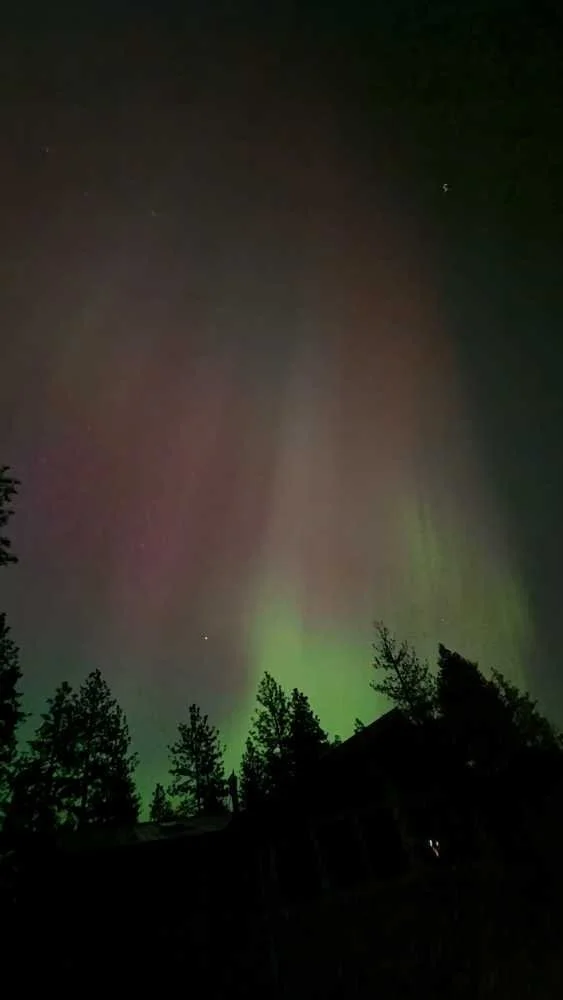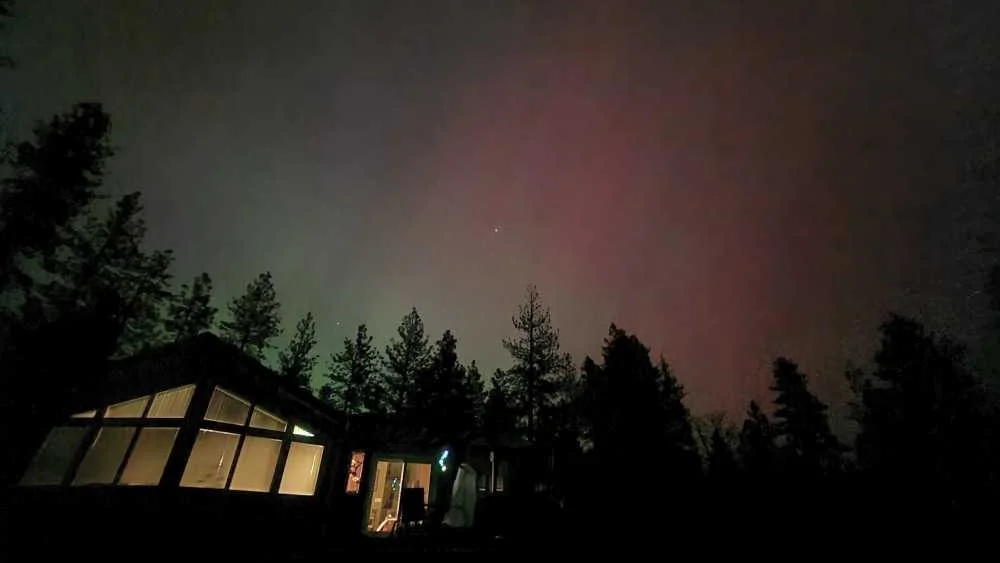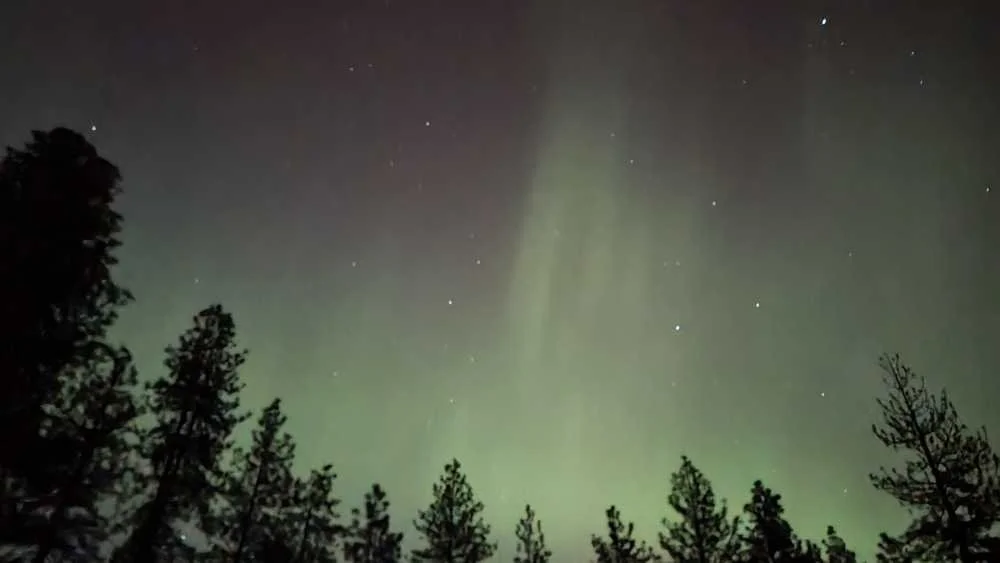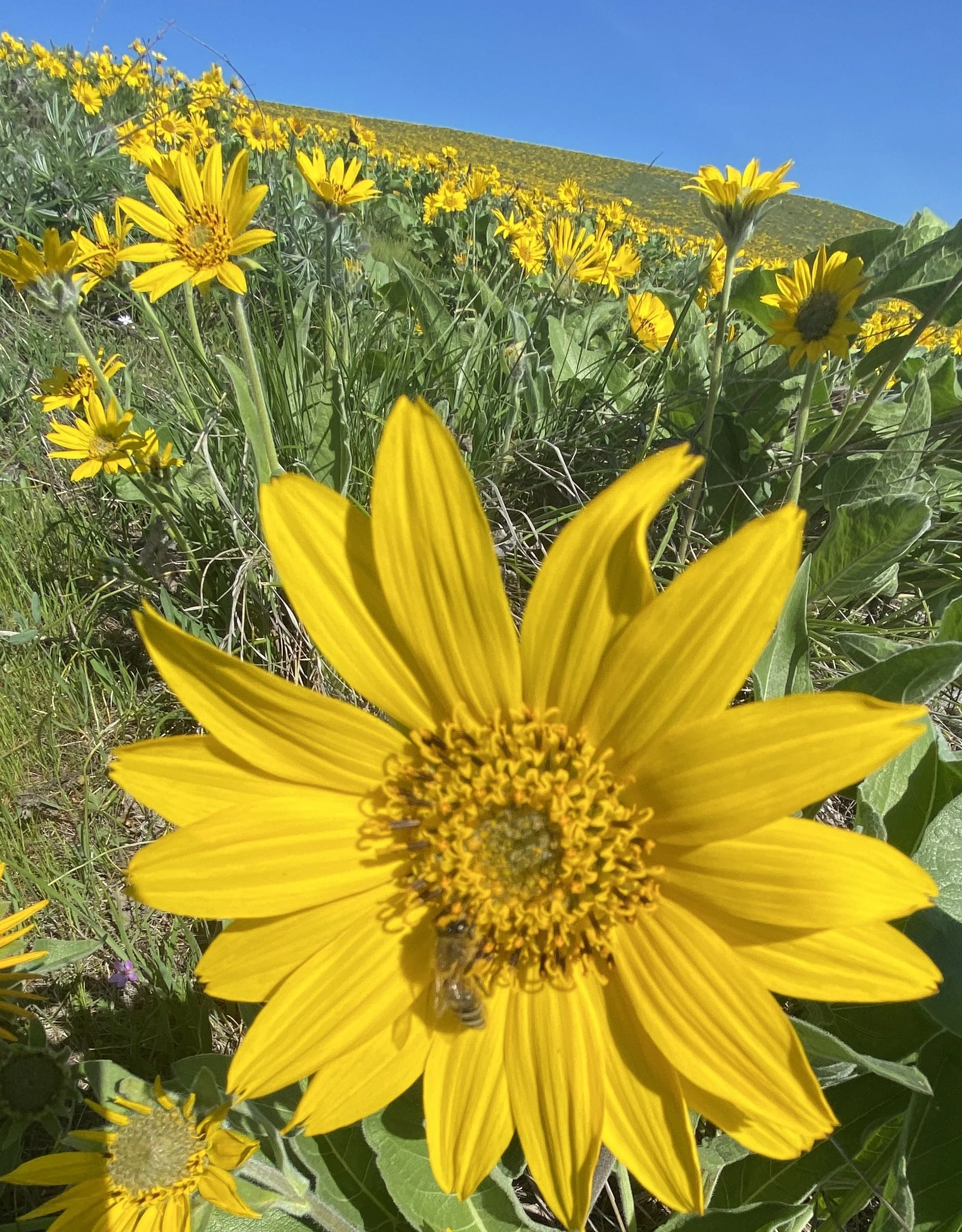Sun Spot Chaser floored with Friday Display; Northern Lights could return Monday, May 13
By Bob Yoesle
Bob Yoesle. Photo courtesy of Perry Technical Institute
Goldendale, Wash., May 12, 2024 — I’ve observed the Sun since getting my first telescope in 1962 for Christmas. I’ve seen a few solar cycles since then, most much larger than the current Sunspot Cycle 25, and lots of large sunspot groups.
I’m so happy I could witness this spectacular sight (on Friday, May 10) right at home, and apologies to those who may have missed out. On the other hand, AR13664 unleashed another X-flare or eruption from the sunspots earlier today (May 11th @ 0139 UT) – its strongest yet.
The X5.8-class flare produced a significant Coronal Mass Ejection (CME) with a large Earth-directed component. The CME will hit the Earth’s magnetic field on May 13, so the possibility of more geomagnetic aurora activity will persist, though a brighter first-quarter moon might interfere a little bit.
ises-solar-cycle-sunspot 1956 to present - click graphic to expand.
While my solar telescopes are plentiful and offer great views of the Sun…
… Living in the lower 48; solar generated geomagnetic storms that have produced easily visible aurora have been disappointing. Some of the larger ones I hoped to see were eclipsed by clouds or bright moonlight. These geomagnetic storms usually occur with increased solar flare activity near sunspot maximum, and include the strongest X-class flares and Coronal Mass Ejections. However, the recent spate of activity from this relatively small sunspot cycle has been superb.
Sunspot group/Active Region 13664 has been amazingly active with a complex gamma-delta magnetic field structure which is highly likely to produce solar flares.
Tangles of positive and negative magnetic fields surrounding AR 13664. Solar Terrestrial Activity Report.
The geomagnetic storm this weekend was a G5 level event not seen for 20 years with the much larger Solar Cycle 23. These solar wind impacts were due to Coronal Mass Ejections observed on May 8 and 9. The disturbance level at times exceeded the level required for Kp 9 (G5) - the largest level possible.
May 10-11 aurora oval. NOAA Space Weather Prediction Center
Click to enlarge table
Above - a view of the sun’s photosphere on May 10, 2024 with the large island of sunspots in Active Region 13664 at 4 o'clock. Most of the sunspots visible are larger than the Earth. ED 100/900 refractor, Baader Hershel wedge and Continuum filter. PGR Chameleon. Captured w/ FireCapture, 30 frames stacked and wavelets w RegiStax, additional tweaks in Paint Shop Pro.
Above — "Angry" AR13664 in the light of the Hydrogen Chromosphere - Hydrogen plasma at 20,000 degrees Celsius, with M and X-class flare activity, May 10, 2024. Imaging system: ED100/900 refractor, Coronado (Tucson era) SM90/90/BF30 H-alpha filter system, Televue 2x Barlow, PGR Chameleon. Captured w FireCapture, 30 frames stacked and wavelet sharpening w/ RegiStax, additional tweaks in Paint Shop Pro.
I've caught hints of the aurora on the northern horizon a few times in the past. It looked like faint light pollution without any perceptible color.
But on Friday night May 10, a thin crescent moon setting in the west promised little interference for seeing the predicted possibility of bright aurora. The faint “light pollution” to the north and west after twilight ended – where none should be – started to stretch beyond the zenith and to the south of me:
Just after the end of twilight.
And then as seen with my naked eye the aurora erupted with obvious color. Here in south-central Washington! And what a show it was. As seen above It started out looking like faint green haziness of high thin clouds, and turned into a spectacular light show unlike anything I’ve ever seen:
Just after 2 am.
All photos were taken with a Samsung S21 Galaxy cellphone in "night mode."
Visually the aurora early on appeared mostly a grey-green, stimulated by the emission of light from ionized Oxygen in the lower reaches of the upper atmosphere. An increase of pink-red of this storm took place at its peak, due to the Oxygen present in the upper levels of the atmosphere's near-space environment, before appearing to subside back into the mostly grey-green after 2 am in the morning. Unfortunately, I was too tired to stay up any longer.
Seeing the Northern Lights this well usually requires a trip to high latitudes in Alaska or Scandinavian countries, and even then might not be so well observed. This was a Bucket List item I hoped I would live long enough to see. And this was in my backyard! It required no air travel, no motel lodging, and no special telescope to appreciate, just the Mark I eyeballs I was born with. The movements of the streaks and swirls I’ve seen on a computer screen taken from elsewhere in the world were unmistakable - and amazing.
Zach Schierl, astronomy instructor at Yakima Valley College, and co-founder of the Yakima Valley Astronomy Club captured this spectacular all-night time-lapse of the aurora from his home in Terrace Heights. It shows the dramatic movement that can be seen with auroral displays.
Support local Sun Spotters
News available to everyone. Funded by readers.

















